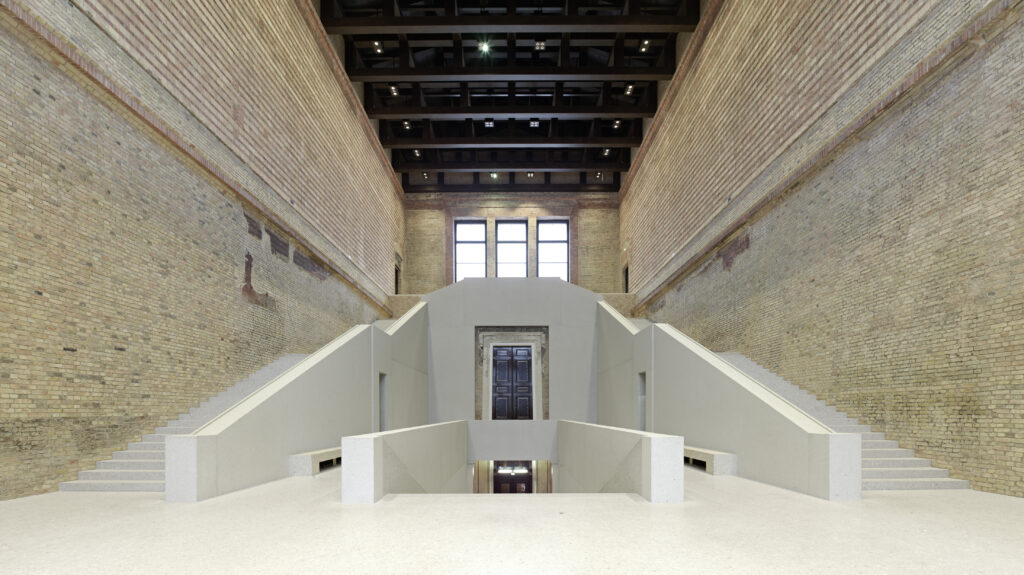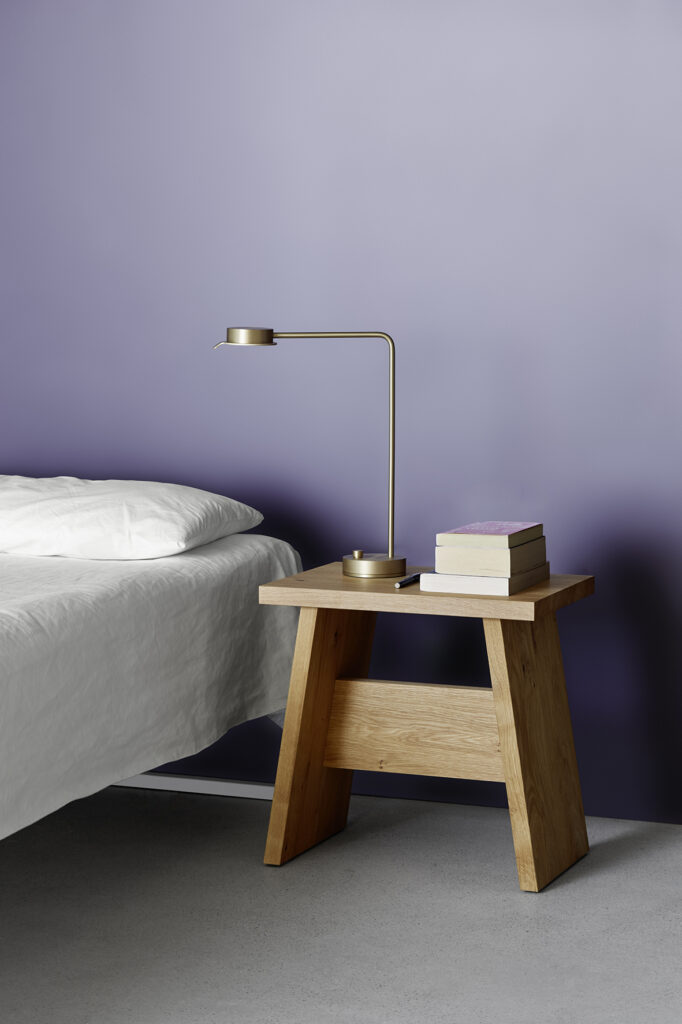He has designed more than a dozen new museum buildings around the world in the last three decades. However, his most important contributions to contemporary architecture are the projects in which he has refurbished and extended existing buildings. On his 70th birthday, David Chipperfield is at the pinnacle of his career as an architect.
By Fabian Peters

On 18 December this year, David Chipperfield turned 70. An outstanding year for him – without a doubt. On 24 May, he was awarded the world’s most prestigious architecture prize, the Pritzker Prize, in the ancient Agora in Athens. The choice of venue for the award ceremony makes several references to Chipperfield’s work: it refers to the classicism of his work, which the jury explicitly emphasised in its statement. It is also a reminder that David Chipperfield Architects (DCA) has just been given the honour of renovating and expanding the National Archaeological Museum in Athens in the coming years. However, the choice of location is also extremely fitting because some of Chipperfield’s most important works deal with historical building structures. Among the great architects of our time, David Chipperfield occupies a special position, not least because he has developed a rare mastery of “building on”. In this discipline, he must now be mentioned in the same breath as the great Venetian architect Carlo Scarpa (1906 to 1978). However, unlike Scarpa, whose interventions were always intended to be visible at first glance as a modern addition, Chipperfield and his team have developed a number of different approaches to dealing with the existing buildings over the years.

He Knows How to Preserve and Carefully Add to the Existing
Chipperfield’s restoration of the Neues Museum on Berlin’s Museum Island is perhaps closest to Scarpa’s concept. Almost half of the late classicist building by Friedrich August Stüler was destroyed in the Second World War, and it was not rebuilt in the GDR. Chipperfield carefully restored the surviving substance and added the missing wing as a brick shell. Inside, he created a monumental concrete staircase as a free interpretation of its destroyed predecessor. Chipperfield’s concept almost ideally fulfils the requirements of the Venice Charter. The charter, which was adopted in 1964 and is one of the cornerstones of modern monument preservation, demands that what has been preserved should be preserved in the best possible way, while additions must bear the recognisable “stamp of our time”.
However, this understanding of restoration, which Carlo Scarpa practised in a textbook manner, has been further developed in recent years, particularly at DCA’s German branch in Berlin. Chipperfield’s general refurbishment of the Neue Nationalgalerie, built between 1962 and 1968 by Ludwig Mies van der Rohe, is almost the antithesis of the Neues Museum. Here, the office is completely at the service of the original architect. Hardly a detail betrays the subsequent intervention. Where adjustments were unavoidable in the exhibition rooms, for example to enable accessibility, DCA mimetically adapt to Mies’ formal language. Only in some of the newly created side rooms do they reveal their own (very restrained) signature.


New and Old Merge into an Independent Work of Spatial Art
Chipperfield and his Berlin office have gone even further than the Neue Nationalgalerie to leave the Athens Charter behind with the Jacoby Studios in Paderborn. Here, they integrated the headquarters of a medium-sized company into the preserved structural fragments of a 17th century Capuchin monastery. The monastery was largely destroyed in the Second World War and was remodelled into a hospital complex during post-war reconstruction. The architects had the 20th century additions removed and exposed the baroque walls again. They carefully filled in gaps in the old quarry stone and brick walls and added new elements in exposed concrete. In doing so, they merged the new and existing buildings into an independent work of spatial art that no longer focuses on the legibility of the historical structures, but on a new architectural experience. In this way, a contemporary ruin aesthetic was developed which, despite a certain brittleness, can almost be described as romantic. Incidentally, this revival of ideas of the picturesque links Jacoby Studios with the James Simon Gallery, which Chipperfield built at the same time in the midst of the highly sensitive surroundings of Museum Island.

Between these extremes are numerous other restoration projects that David Chipperfiels Architects have realised in recent years. One example is the “Morland Mixité Capitale” project, the conversion of a 16-storey office tower from the 1960s, which was previously the headquarters of the Paris prefecture. DCA Berlin obtained the existing building and adapted it for a future mixed-use programme. In the process, they created new public space in the two attic storeys, which now house catering outlets. In collaboration with the “Studio Other Spaces” office of artist Ólafur Eliasson and architect Sebastian Behmann, a light installation was also integrated into the attic storeys. It reflects the sky during the day and creates a new visual point of reference on the banks of the Seine at night.

Views of San Marco and the Campanile
DCA also developed a publicly accessible location for the conversion of the “Procuratie Vecchie” on St Mark’s Square in Venice – a new experience museum housed in the attic of the Renaissance buildings on the north side of the square. Chipperfield and his team from the Milan office created a very restrained sequence of rooms under the roof trusses and concealed a new terrace with a view of San Marco and the Campanile between the gabled roofs. In Berlin, three new buildings are currently being added to the 19th century Bötzow Brewery, while the refurbishment of the existing historicist building was completed a few years ago. Although the future use will mainly consist of research facilities, the architects at DCA attached great importance to preserving the traces of the industrial past and the patina that has developed over a century and a half. As a result, the interiors appear unusually raw by Chipperfield’s standards.

Conversions are not Second Class Architecture
When it was announced in March 2023 that David Chipperfield had been awarded this year’s Pritzker Prize, the vast majority of commentators described it as a well-deserved honour for an outstanding architect of our time. At the same time, however, criticism was voiced – mostly online – that the jury had reverted to old habits. Once again, an old white man (or should we say: an old man from the global North) was being honoured at the end of his career – a “star architect”, like many previous award winners. The shift in emphasis in the selection of laureates, which became noticeable with the honouring of Francis Kéré in 2022 and Lacaton Vassal in 2021, is being reversed. This criticism cannot be completely dismissed. At the same time as the above-mentioned projects, Chipperfield’s offices in London, Berlin, Shanghai, Milan and Santiago de Compostela are also working on numerous new commercial buildings. His name helps to sell architecture – be it on the property market, in politics or in the public eye. David Chipperfield is a globally successful brand. However, it is precisely this prominence that enables Chipperfield to exert influence – on the preferences of investors, on the appreciation of the public and not least on the professional image and self-perception of architects. The latter must come to terms with the fact that new construction will only make up a small part of their work in future, while the preservation and maintenance of existing buildings must take centre stage for reasons of sustainability. The turnaround in construction in the face of climate change makes this essential. It is therefore all the more important that conversions no longer represent second-class architecture. The world’s most highly regarded architecture prize for David Chipperfield is not least an expression of this change in understanding.


Tables, Benches, Suitcases – Chipperfield as Designer
In addition to honouring his achievements as an architect, it should not be forgotten at this point that David Chipperfield, who was named “Personality of the Year” by the German Design Council in 2022 as part of the German Design Award, is also repeatedly active as a designer. For the Swedish lighting manufacturer Wästberg, for example, he designed the w102 series, which is one of Chipperfield’s most successful object designs with its reduced and striking design language. In recent years, he has created a whole series of almost monastic-looking tables and seating for the Frankfurt furniture manufacturer e15, some of which were created in connection with architectural projects. The bench made of steel and leather that Chipperfield and his team designed for the rooms of the James Simon Gallery is particularly beautiful. Even a suitcase was designed by Chipperfield. As he is constantly travelling, he was unable to find a piece of luggage to his liking, so without further ado he developed it together with Frankfurt bag manufacturer Tsatsas – a gift to himself, so to speak, from which others can now also benefit. Perhaps David Chipperfield will give himself another such gift for his 70th birthday. We would like to wish him – and us – the very best.

More on ndion
More articles on the topic of design.
Share this page on social media:

